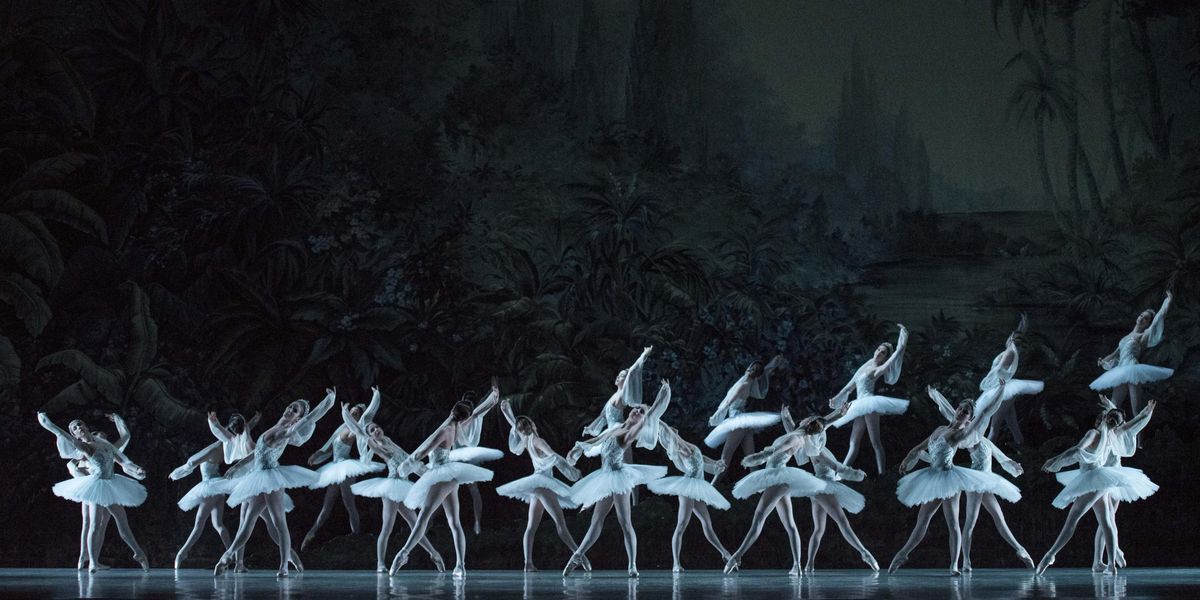A Year Into the Pandemic, What Is the Future of the Corps de Ballet? Here's Why It Matters.
Occasionally, in my dreams, I relive the entrance of the Shades from La Bayadère. From the quiet, hypnotic buildup of arabesques snaking down the stage to the prayerlike moment when the entire corps de ballet freezes in a front tendu, arms crossed and eyes turned upwards, it is where my mind goes for rest and contemplation, more so than any extraordinary variation.
A year into the pandemic, large-scale ensembles are also what I’ve missed the most on the ballet stage. As COVID safety protocols prevented dancers in many countries from gathering in large groups, when companies were able to deliver livestreams or performances with limited audiences, they have favored gala-style excerpts and smaller works—leaving aside a core strength of the classical repertoire.
Taken out of context, however, a lot of gala staples start to feel like technique contests. In longer productions, ensemble scenes offer contrast and scale; between variations and pas de deux, they allow viewers to take a step back and grasp the architecture of the world being built onstage. I’ve found myself longing to see William Forsythe’s Artifact or John Neumeier’s Third Symphony of Gustav Mahler again—to take in, once more, the sweep and chess-like complexity of works that make full use of ballet’s resources.
Bringing so many people together now seems daunting, leaving corps dancers in limbo. While some principals and soloists have been called upon to deliver miniatures, or have the name recognition to get other projects going, many of their colleagues lower down the ranks have felt bereft without their regular workloads. “Of course I’ve missed it,” says Fanny Gorse, a sujet at the Paris Opéra Ballet. “When rehearsals go well, when you’re in the studio and have that group emulation, it’s such a special feeling.”
Being back in the studio lately to rehearse Angelin Preljocaj’s Le Parc, even without public performances, has helped. “You’re not necessarily going to go on holiday with your colleagues, but you have your rehearsal friends,” she says. “It makes me feel younger. You’re working, but you’re having fun.”
Maintaining a large corps de ballet isn’t cheap. Cost-cutting measures already forced a number of companies to downsize in the wake of the 2008 financial crisis; the extent of the permanent layoffs triggered by the pandemic has yet to become clear, but some employers, like The Royal Ballet, have offered voluntary redundancy to dancers. (Out of the five who took it at The Royal, four were corps members.)
In that sense, the situation may yet compound the trend towards shorter works involving fewer dancers. As part of my PhD, I built a database of all the ballets created by four major companies (the Paris Opéra Ballet, New York City Ballet, the Bolshoi Ballet and English National Ballet) between 2000 and 2016. Out of 196 works in total, 87 percent were one-act ballets; despite the companies’ size, the average number of dancers involved in new works was 18.
Very few creations employed what we might consider a large corps de ballet: 38 percent offered only soloist parts, and just under 20 percent had a corps of over 20 dancers.
There are reasons beyond the budget for choreographers’ reluctance to work with large ensembles. First, many choreographers are freelancers who travel from company to company, and working with a small cast is easier when you’re not familiar with all the dancers. Facing a big group in the studio and taking a range of bodies into account also requires different skills from a one-on-one rehearsal.
For dancemakers who favor an improvisation-driven process, the mathematical dimension of complex corps work can be a turnoff. According to Nikolai Legat, Marius Petipa worked with chess-like pieces to map out patterns in advance for his large-scale tableaux; similarly, the choreographer and former Paris Opéra Ballet étoile Jean-Guillaume Bart worked out the way his lines of corps dancers would travel and intersect on paper ahead of time when he reinvented La Source in 2011.
And in the studio, managing dozens of people is no walk in the park. As Crystal Pite told me for Pointe in 2016, “there’s a whole aspect to the craft of choreography that involves directing and leading a group of people. And it’s like dancing: You need to practice, to work on being a leader.”
Before the pandemic, Pite led a small revival of ensemble-driven choreography in the ballet world, with successful productions including Flight Pattern (at The Royal Ballet) and The Seasons’ Canon (for the Paris Opéra). For the latter, which featured a 54-strong cast, she worked out some of the choreography in advance with students in Vancouver.
Will that revival endure? The appeal of so many bodies coming together and breathing as one may be even stronger when all restrictions are lifted, but ballet companies would do well to work harder at capitalizing on it. Teaching young choreographers the tricks of the trade would be a good start.





